Tankers Curiosity and Courage sail towards the Cologne Cathedral and the future of inland navigation. Photo: HGK
The Hydrogen Future of Inland Navigation
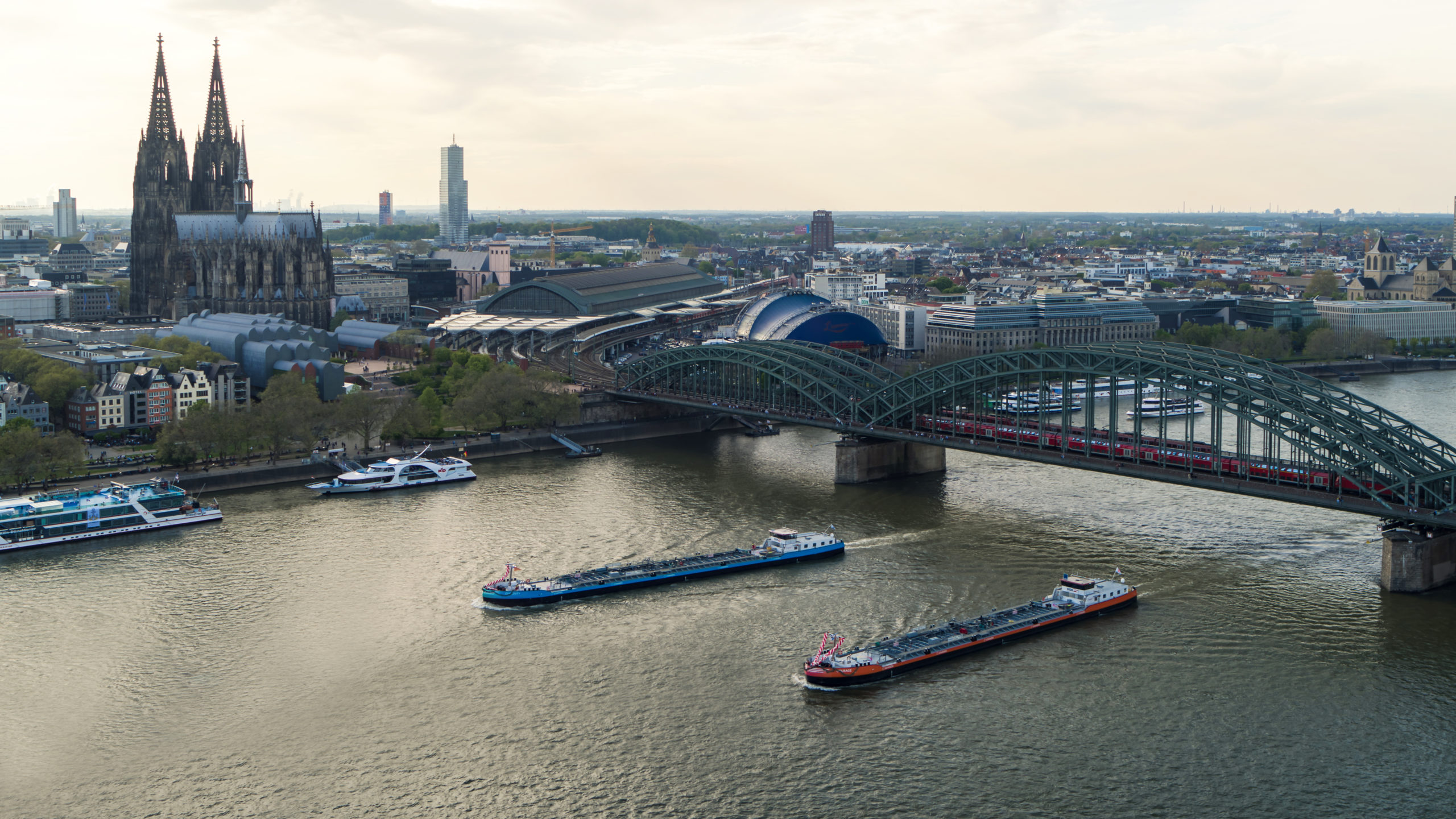
The Rhenish mining area, which is situated close to the river Rhine, is currently the largest lignite mining region in Europe and is set to become the focus of Europe’s biggest climate protection project. This will come to fruition as lignite is gradually phased out as an energy carrier until 2030 and new technologies are established that do not harm the environment. The river Rhine is expected to become a widely visible symbol for a net-zero energy economy and carbon-neutral transport options. Hydrogen has a key role to play in this process.
Leading inland navigation company
HGK Shipping, Europe’s leading inland waterway shipping company which has a fleet of around 350 vessels and almost 1,000 employees, is one of the pioneers in this field. This became clear as the company launched its new sister vessels TMS Courage and TMS Curiosity. The two chemical tankers are now in operation on the Rhine and its tributaries on behalf of materials manufacturer Covestro.
“With the new diesel–electric powertrain, we have now been able to reduce CO2 emissions by 30 % compared with conventional vessels,” said Steffen Bauer, CEO of HGK Shipping. On both tankers, the shipbuilders have left room for future developments – as is the case with all new HGK vessels. There are two empty rooms on board in which innovative hydrogen powertrains can be installed.
“This is an extremely interesting project with a lot of potential.”
Prof. Peter Wasserscheid
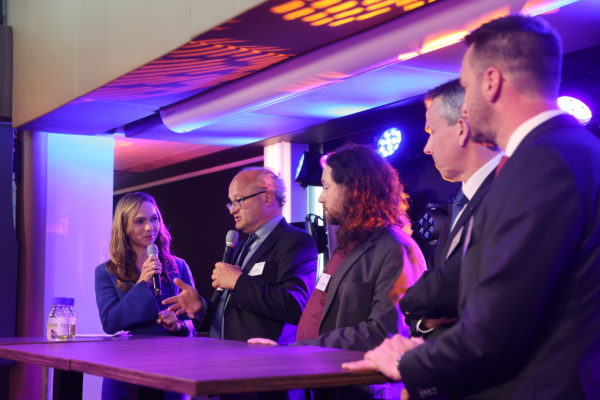
Prof. Peter Wasserscheid (2nd from left) during a panel discussion at the launching of the new vessels,
stood alongside (from left to right) Dr. Caspar Paetz (Hydrogenious), Ferdinand Rammrath (Covestro),
and Steffen Bauer (HGK). Photo: Forschungszentrum Jülich/Jansen
And this is exactly what is planned, as Bauer and Dr. Caspar Paetz, Chief Technology Officer at Hydrogenious LOHC Technologies, explained at the launching of the vessels. Both companies have signed a memorandum of understanding to initiate a research project, which will demonstrate how inland waterway vessels can be fuelled and powered by hydrogen stored in LOHC. “This is an extremely interesting project with a lot of potential,” said Prof. Dr. Peter Wasserscheid, one of the pioneers of LOHC technology and spokesperson for the Helmholtz Cluster for a Sustainable and Infrastructure-Compatible Hydrogen Economy (HC-H2).
Critical mass not yet reached
There’s still a long way to go to achieve a climate-relevant change in inland shipping, Bauer stressed. There are ideas such as the proposed project. But these are all planned for the future. A critical mass has also not yet been reached in Germany’s inland shipping sector, according to Bauer. In 2021, it accounted for roughly 7 % of freight transport services in Germany, a figure which has been on the decline for 30 years now.
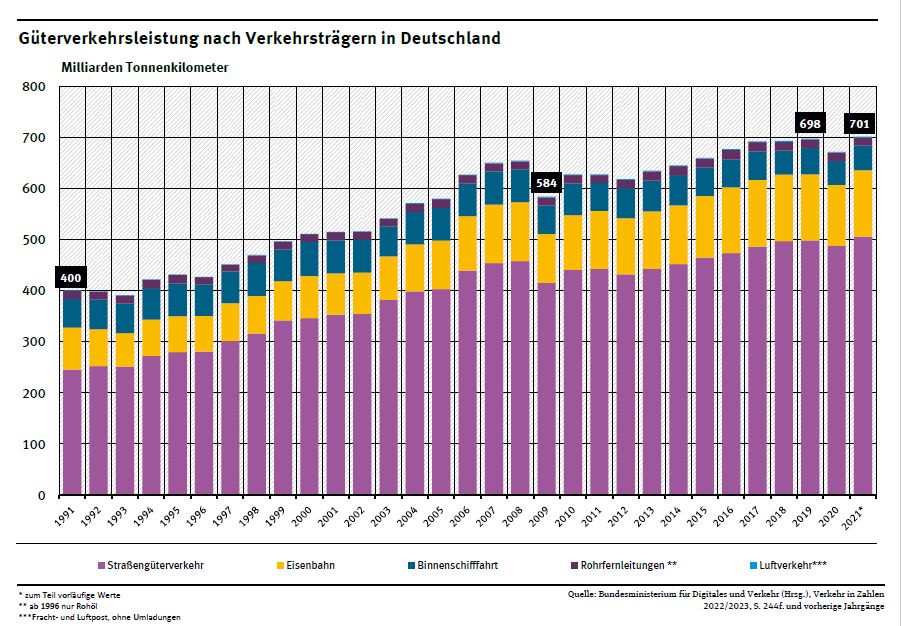
According to TU Hamburg, coastal and inland waterway transport accounted for around 1 % of total greenhouse gas emissions in Germany in 2022. This is what Bauer meant when he said that a critical mass had not yet been reached in Germany.
Inland shipping’s share of freight transport in Germany is set to change. “By 2030 it should make up 25 % of freight transport, a figure that will rise to 50 % by 2050. I admit that these are ambitious goals. But it highlights how this form of transport can play an important role,” explained Bauer in reference to the European Union’s plans. If we succeed in converting the inland shipping sector to carbon-neutral powertrain technologies, then it will grow to become a relevant factor with respect to carbon neutrality in the transport sector, with the sector set to be ramped up over the next few years.
With its new vessels, HGK Shipping is responding to a climate change problem that can be keenly felt on the Rhine: the increasing occurrence of low water levels. TMS Courage and TMS Curiosity are still capable of carrying 160 tonnes of cargo at a draught of just one metre.
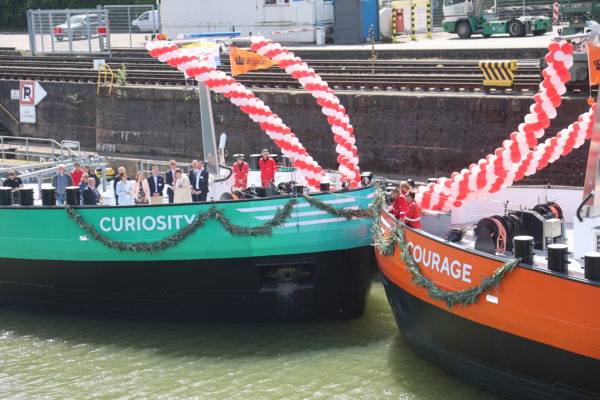
The launch ceremony for sister vessels TMS Courage and TMS Curiosity Photo: Forschungszentrum Jülich/Jansen
In addition to powertrains, Bauer addressed another important aspect in which hydrogen will play a major role in the future of inland navigation: the shipment of hydrogen itself. Important transport goods such as coal and oil are on the way out. HGK Shipping has increasingly moved away from these transport goods in recent years. “But they still remain very important for the sector.”
Hydrogen and its derivatives could become such a transport good if demand increases. The same applies for CO2, which will be prevented from entering the atmosphere through carbon capture and storage. The bound CO2 can then be stored on the seabed. As HGK Shipping is also active in the field of coastal trading vessels, the company is currently working to offer services involving the transport of bound CO2 to its storage sites.
“Preserving existing infrastructures for the green world”
Back to the issue of hydrogen and the method by which the energy carrier can be stored and transported: Wasserscheid emphasized just how important it is that “we preserve our existing infrastructures for the green world. To tear them down and build new ones would be absurd.” This was a view shared by Steffen Bauer and Caspar Paetz. As a heat transfer oil, LOHC – which is similar to diesel in terms of its properties and its storage and transport requirements – is ultimately compatible with existing infrastructures such as fuel storage facilities, tank trucks, and pipelines. “We see a lot of potential for inland shipping,” said Bauer.
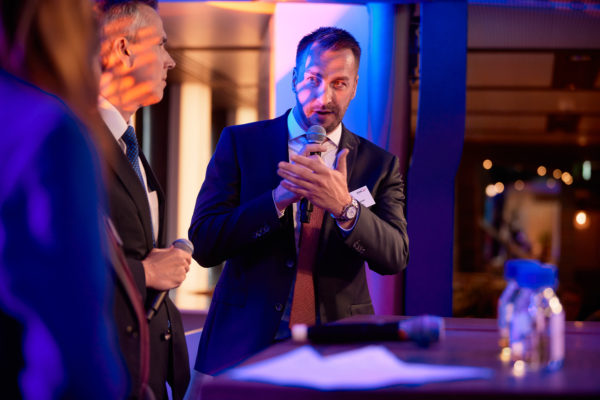
Steffen Bauer, CEO of HGK Shipping. Photo: HGK
